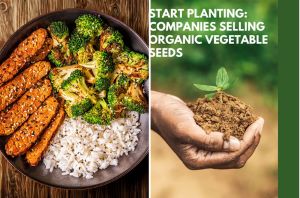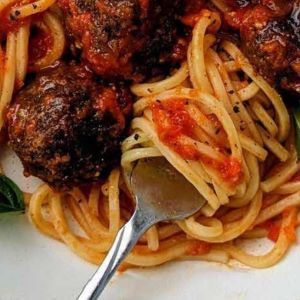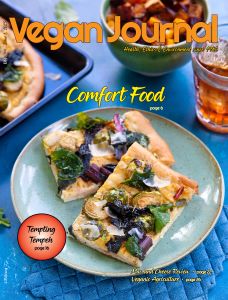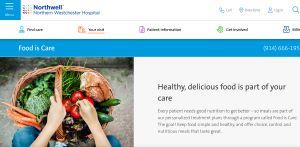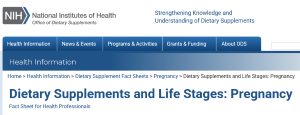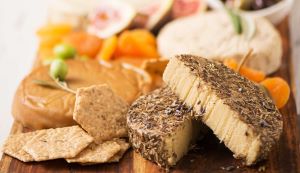Mediterranean Vegan Dishes
Olga Kouloufakos serves up a variety of Mediterranean vegan recipes in a previous issue of Vegan Journal. You can prepare Stuffed Tomatoes; Vegan Meatballs (based on mushrooms and oats); Moussaka; Pasta with Chickpea & Mushroom Pesto; and Lasagna.
Read her entire article here: https://www.vrg.org/journal/vj2024issue3/2024_issue3_mediterranean_mainstays.php
To subscribe to Vegan Journal, visit www.vrg.org/member
MASSACHUSETTS STUDENT EZRA LEV KLEINBAUM WINS $10,000 VEGETARIAN RESOURCE GROUP 2025 COLLEGE SCHOLARSHIP
During my first week in high school, I started an animal rights club. As a fourteen-year-old, I stood alone at the club fair, recruiting people older than me to join. The first project we took on was bringing more plant-based foods to the school cafeteria. By the end of my freshman year, we had started Meatless Mondays at the high school and designed lesson plans about the importance of plant-based eating that every high schooler in the district participated in. By the end of my sophomore year, we had expanded Meatless Mondays to every school in the district. We worked with a group of health teachers to revise the middle school wellness curriculum to include education about plant-based eating. By junior year, we had worked to guarantee access to full plant-based options at every school district-wide, and by senior year I had worked with the district to guarantee that a minimum of 50% of food served district-wide would be fully plant-based by 2027. I faced a vocal minority of students who opposed the expansion of plant-based options. However, I ended up collaborating with them to serve plant-based versions of the foods they already love.
During my sophomore year, I recruited students from up and down Eastern Massachusetts and as far west as Sturbridge to advocate for state-level legislation to expand access to plant-based food. We successfully established a commission to make recommendations pertaining to the availability of plant-based food in school cafeterias across the state. By junior year, I was working with a group of students who have successfully brought plant-based food to their school cafeterias, helping other students do the same. I’ve one-on-one mentored students as close as neighboring Arlington, MA, and as far away Houston, sharing the knowledge and skills I’ve acquired through my five years of plant-based advocacy.
You can see a video on Meatless Mondays produced by Ezra here: https://brooklineinteractive.org/meatless-mondays-promo
Support Young Veg Activists
To send support for additional scholarships and internships, donate at www.vrg.org/donate or call (410) 366-8343. You can send a donation to VRG, P.O. Box 1463, Baltimore, MD 21203. You can also donate via your stock donation, your IRA, or a bequest.
Do you know an amazing high school student promoting veganism? If so, let them know about our annual scholarship contest. The deadline for high school seniors is February 20th of each year. To see scholarship rules and past winners, visit www.vrg.org/student/scholar
Green Mitzvathon Environmental Fair in Baltimore, Maryland
Green Mitzvathon Environmental Fair
Sunday, May 4, 2025
Fair hours 11 am – 3 pm
Chevrei Tzedek Congregation @ Myerberg Center
3101 Fallstaff Road, Baltimore, MD 21209
For details, see: https://www.chevreitzedek.org/greensunday.html
VRG will be tabling at this event. Vegan food will be available.
Subscribe to Vegan Journal Today!
Vegan Journal is published by The Vegetarian Resource Group. Enjoy in-depth original research, product and book reviews, scientific updates on veggie nutrition, delicious vegan recipes with gorgeous photos, plus so much more. Both long-term vegans and those new to a vegan life-style will enjoy this magazine.
To subscribe in the USA only, see: https://www.vrg.org/member/
Vegan in the Hospital
by Reed Mangels, PhD, RD
We recently heard from two vegan VRG members who had positive experiences during their hospital stays and who agreed to share their stories.
A VRG member had to spend a night in Union Memorial Hospital in Baltimore, Maryland. His meal request was put in as lacto-ovo vegetarian (due to the confusion of everything going on medically speaking); however, the meals served to him were vegan with one item being an exception!
The first dinner meal consisted of Spaghetti Marinara, Steamed Rice, Zucchini Noodles, and a Wheat Dinner Roll. Breakfast the following day contained Oatmeal, Hash brown Potatoes, an English Muffin, a Banana, and the only item that was not vegan was a Greek Yogurt (however, if the meal request had been entered as vegan, perhaps vegan yogurt would have been provided). Finally, lunch consisted of Pasta and Sauce with Steamed Fresh Spinach and Beans, Oven Roasted Potatoes, Mixed Vegetables, and Diced Peaches.
Additionally, the cafeteria at Union Memorial Hospital had a separate station where one could purchase a vegan falafel bowl with many add-in items that were clearly labeled as vegan. They also sold fresh fruit, hummus, guacamole, and more.
Another VRG member spent several days at Northern Westchester Hospital in Mount Kisco, New York. According to the hospital’s website, all patients’ meals are cooked to order by Culinary Institute of America chefs with access to an onsite herb and perennial garden and locally grown, fresh produce.” The patient menu encouraged patients to call the food service to learn more about vegan dining options. They were very helpful in terms of altering menu items to make them vegan and answering questions.
Vegan-friendly breakfast items at Northern Westchester Hospital included avocado toast, tofu scramble, a mango strawberry smoothie, steel-cut oats, assorted breads, fruit, peanut butter, almond butter, roasted vegetable hash, and veggie sausage.
For lunch and dinner, tofu and chickpeas could be added to any salad. There was also a grilled garden vegetable sandwich with hummus and a Baja Veggie Bowl featuring black beans, butternut squash, zucchini, corn, a quinoa and brown rice pilaf, and avocado with seared tofu available as an add-on. A personal pan pizza with lots of vegetables was on the menu and they readily agreed to make it without cheese. Desserts included fruit and several flavors of Italian ice. Almond milk and vanilla soy milk could be ordered with every meal.
The cafeteria had the same grilled garden veggie sandwich as was on the patient menu as well as almond milk yogurt, fruit, and a hearty salad with farro, lettuce, sweet potatoes, pickled red onions, and walnuts.
We are heartened to hear of these positive experiences, while recognizing that not every hospital will be as vegan-friendly as these were. As Camryn Bell, a dietetic intern, wrote in 2020, “much like society, they [hospitals] have come a long way with accommodating and offering vegan options. It is a lot easier to get information on ingredients and being able to have vegan food in the hospital than it was even a few years ago.”
To read more about being vegan in the hospital see:
Hospital Survival Guide for Vegans
Enter The Vegetarian Resource Group’s 2025 Video Contest: Deadline July 15th
The Vegetarian Resource Group is once again sponsoring a video contest. We will be awarding several $100 awards. The deadline for entries this year is July 15, 2025.
Create and submit a video relating what you want to tell others about veganism. Some possible topics: food, nutrition, your feelings about veganism and/or vegetarianism, water usage and veganism, veganism and animal rights, or other veggie topics which appeal to you. Humor and feelings are appreciated. All videos should be positive, not be critical of anyone, and not include any footage of animal cruelty. You may submit a video you have already made. Please do not enter videos made completely using AI.
Aspects of judging include accuracy and judges wanting to share the video with others. Entrants give permission to The Vegetarian Resource Group to post and share the video, to link to and from the video, and share the video with the media.
To see the video contest rules, visit: http://www.vrg.org/videoscholarship.php
Previous wining videos can be found here: http://www.vrg.org/veg_videos.php
Information About Vegan and Vegetarian Nutrition in Pregnancy Included in a New Fact Sheet for Health Professionals from the NIH Office of Dietary Supplements
By Reed Mangels, PhD, RD
The Office of Dietary Supplements (ODS), a division of the National Institutes of Health, recently posted a new fact sheet for health professionals, Dietary Supplements and Life Stages: Pregnancy, on the ODS website. This fact sheet provides a summary of current research and recommendations for vitamins, minerals, choline, and omega-3 fatty acids during pregnancy. Specifically, it addresses calcium, choline, folate/folic acid, iodine, iron, magnesium, omega-3 fatty acids, vitamin A, vitamin B6, vitamin B12, vitamin D, and zinc. Sections are included on several botanicals (such as chamomile and raspberry leaf), and on nutritional considerations for twin and other multiple pregnancies, vegetarian and vegan diets, bariatric surgery, and sickle cell disease. This fact sheet could be a useful resource to share with your obstetrician or nurse midwife.
To read more about vegan diets in pregnancy see:
Vegan Nutrition In Pregnancy and Childhood
Prenatal Supplements for Vegans
Deli Business Magazine Sees Plant-Based Options as an Innovation Tool
by Debra Wasserman
One of my many hats at The Vegetarian Resource Group is Managing Director of Vegan Journal. In that role, I often scan through different types of publications to see what the general population is thinking. For example, I read a Hindu magazine, a Kosher magazine, and food sections in various newspapers. Recently I was glancing through the spring edition of Deli Business magazine and was delighted to read the publisher’s message titled “An Explosive 2025.”
Ken Whitacre states, “The three areas of innovation will be in prepared foods, plant-based items and vegetarian/vegan alternatives … Innovation is changing the makeup of many products. Plant-based foods are gaining traction. It’s important for buyers to recognize that plant-based and vegetarian or vegan are very different.”
He then goes on to say, “Plant-based means common items are not produced with the use of animal products. As an example, plant-based cheeses are growing in popularity. The early examples were mainly a failure, featuring an overwhelming flavor of chemicals and plastic, and the texture was even worse. Even more distasteful were vegan meats.”
Whitacre then adds, “However, plant-based cheese and dairy products have gotten very good. No, they do not taste like dairy-based cheese, and some people debate whether they should be called “cheese,” but the quality is high, and they are very tasty. They should be included in every cheese department. Additionally, plant-based meats are increasingly becoming popular, although the location maybe in the frozen food aisle.”
All this is being stated in a magazine that generally is focusing their promotion on standard deli department items such as cold-cuts and sliced dairy cheese. In fact, this editorial was published in the same mailing that included an entire separate insert featuring varieties of dairy-based cheese. Whitacre also urged deli managers to consider adding healthy vegan-stye salads not using tons of added mayonnaise, etc. Consumer demand certainly continues to evolve!
Bill Introduced in Congress that Would Grant Schools More Flexibility to Serve Plant-based Milks
By Reed Mangels, PhD, RD
Currently the requirements for public schools in the United States to provide a substitute for cow’s milk for non-disability reasons (such as a vegan diet) include a fluid milk substitute meets specified nutrition standards, the milk substitute is requested in writing by a medical authority or the child’s parent or legal guardian, and the school must cover any expenses that exceed program reimbursements.
Recently, the bipartisan Freedom in School Cafeterias and Lunches (FISCAL) Act (S.1236), was introduced in the Senate by Sens. John Fetterman (D-PA), Cory Booker (D-NJ), and John Kennedy (R-LA). This bill , would make it easier for schools to serve plant-based milks that are nutritionally equivalent to cow’s milk. The bill was referred to the Senate Committee on Agriculture, Nutrition, and Forestry. The bill was introduced in the House (H.R. 2539 FISCAL Act) by Reps. Nancy Mace (R-SC), Anna Paulina Luna (R-FL), and John Mannion (D-NY) and was referred to the House Committee on Education and Workforce.
To read more about school meals see:
USDA Issues Revisions to Child Nutrition Programs
Getting Vegan Food into Schools
Vegan Options in a California School
Vegan Options in Portland, ME School Lunch
New York City School Lunch Program Features “Vegan Fridays”
